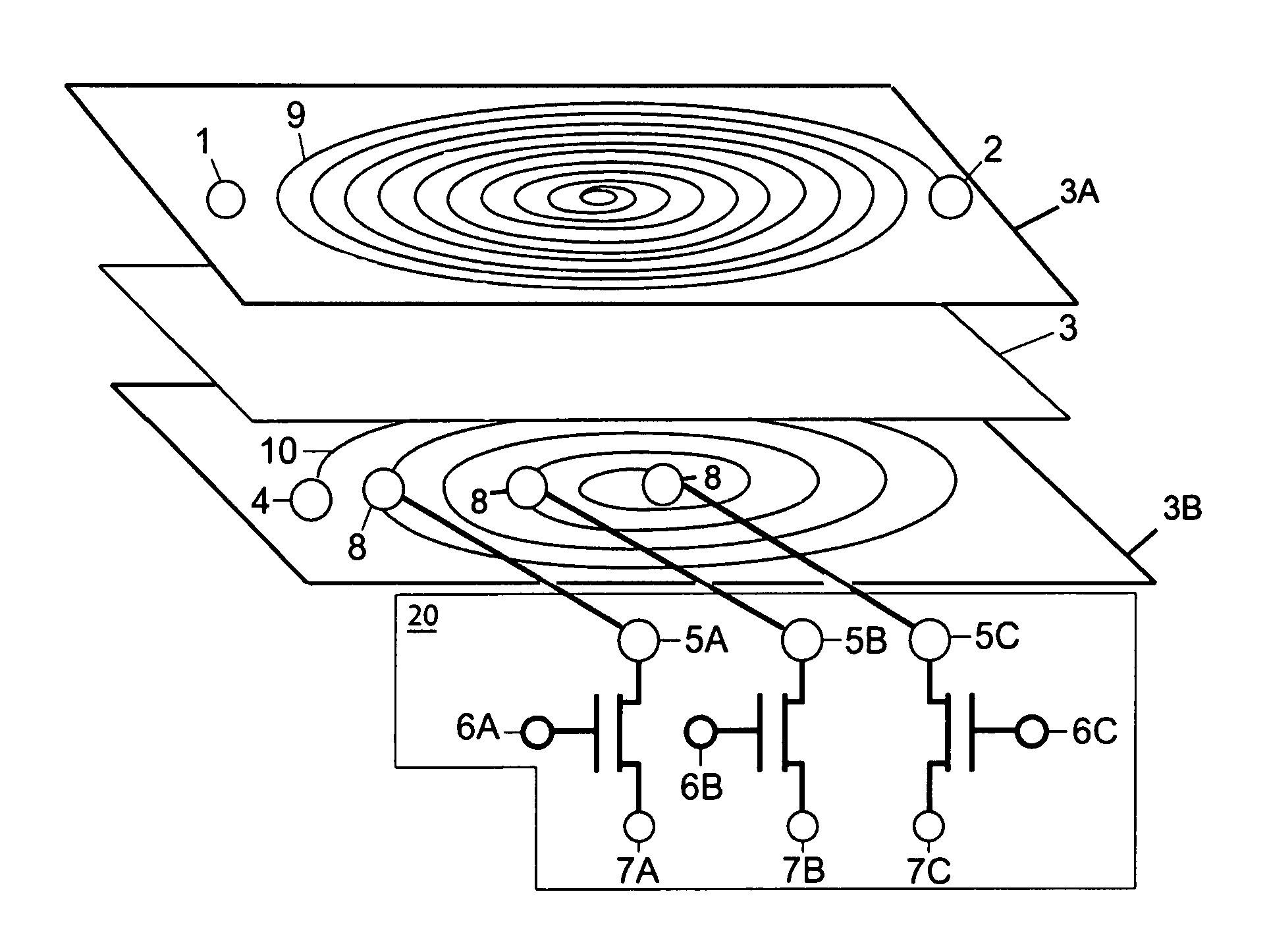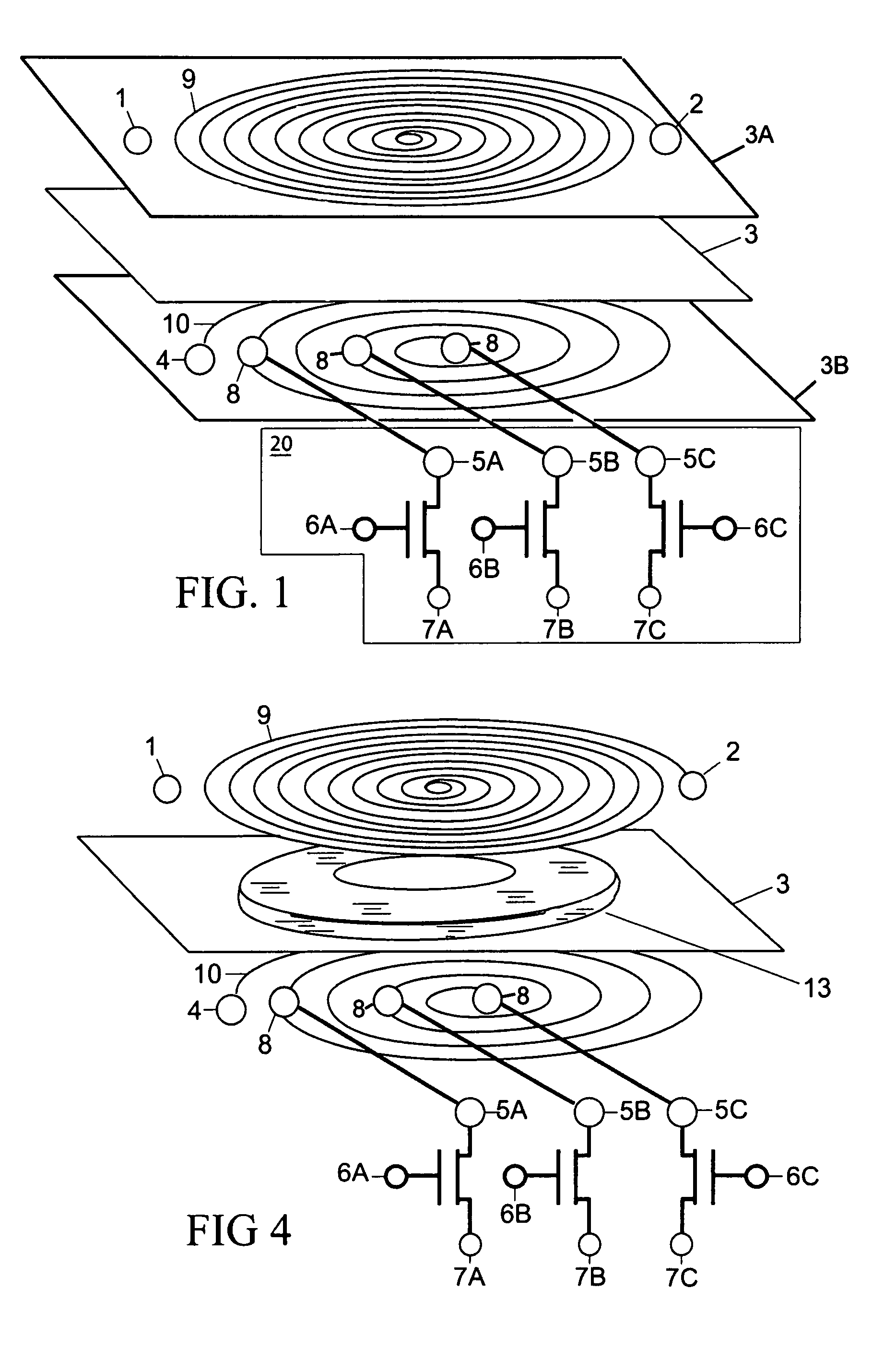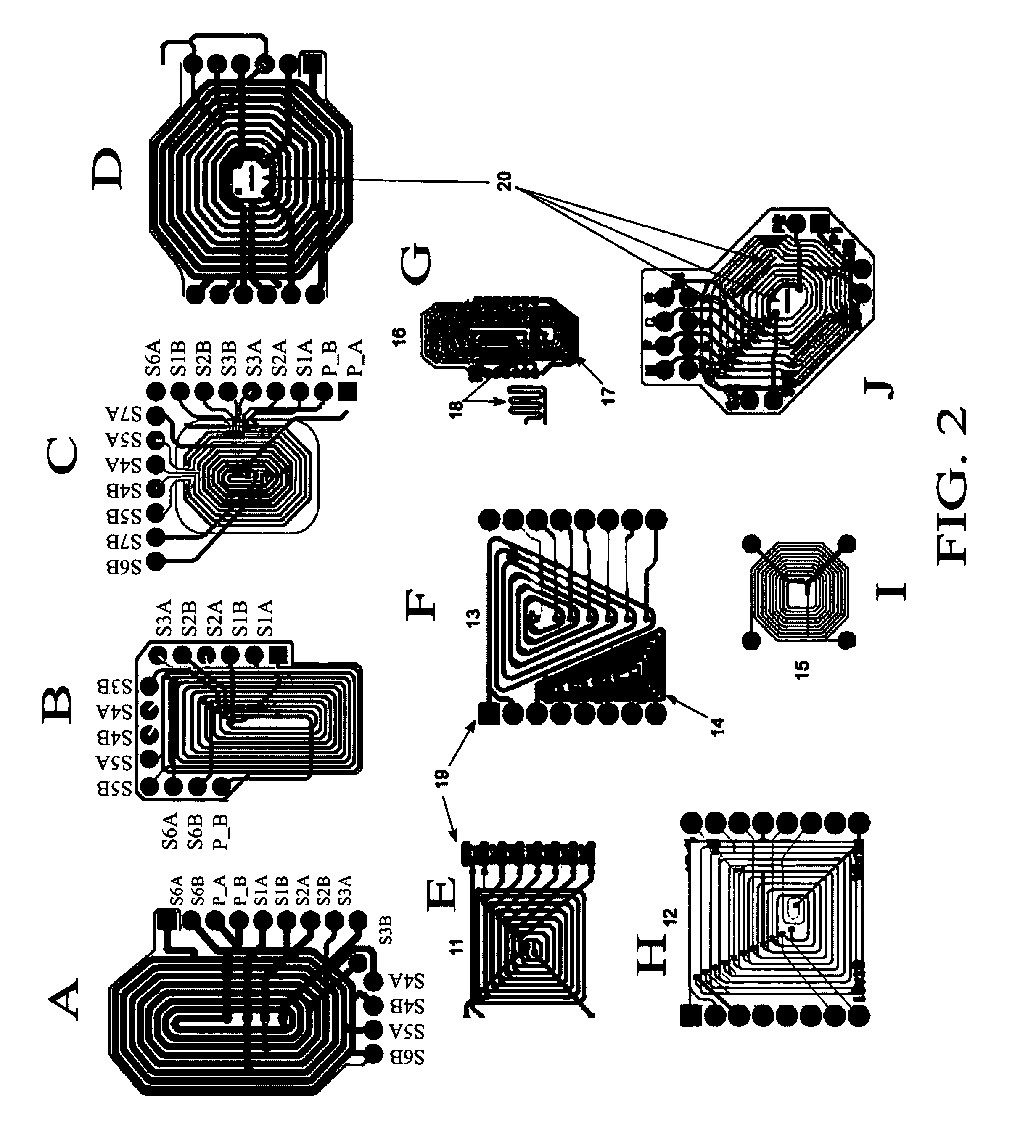Programmable microtransformer
a microtransformer and programming technology, applied in the field of microtransformers, can solve the problems of increasing the mass, volume and cost of the transformer, traditional fabrication methods precluding the use of common transformers as embedded systems, and the foregoing examples simply cannot be built effectively using printed circuit board fabrication
- Summary
- Abstract
- Description
- Claims
- Application Information
AI Technical Summary
Benefits of technology
Problems solved by technology
Method used
Image
Examples
Embodiment Construction
[0029]An exemplary embodiment of the invention is a programmable microtransformer design incorporating flat-wire windings embedded in a thin-film substrate, the secondary windings having multiple tap points connected to digital controls that permit dynamic adjustment of the turns ratio. A method of production is also disclosed.
[0030]FIG. 1 illustrates a basic embodiment of a transformer 2 according to the present invention with both of two windings 9, 10, where each is partially, or completely, initially embedded into a substrate 3A and a substrate 3B, respectively. Substrates 3A and 3B are merged or sandwiched to form a single layer substrate 3 so that windings 9 and 10 are respectively, partially or completely, embedded into the single layer substrate 3. This embodiment is constructed with a flat wire trace as the primary winding 9. Primary winding 9, and its input leads 1, 2, are embedded into substrate 3 on one side, and secondary winding 10 is embedded on the other side. In ope...
PUM
| Property | Measurement | Unit |
|---|---|---|
| diameter | aaaaa | aaaaa |
| frequencies | aaaaa | aaaaa |
| thickness | aaaaa | aaaaa |
Abstract
Description
Claims
Application Information
 Login to View More
Login to View More - R&D
- Intellectual Property
- Life Sciences
- Materials
- Tech Scout
- Unparalleled Data Quality
- Higher Quality Content
- 60% Fewer Hallucinations
Browse by: Latest US Patents, China's latest patents, Technical Efficacy Thesaurus, Application Domain, Technology Topic, Popular Technical Reports.
© 2025 PatSnap. All rights reserved.Legal|Privacy policy|Modern Slavery Act Transparency Statement|Sitemap|About US| Contact US: help@patsnap.com



